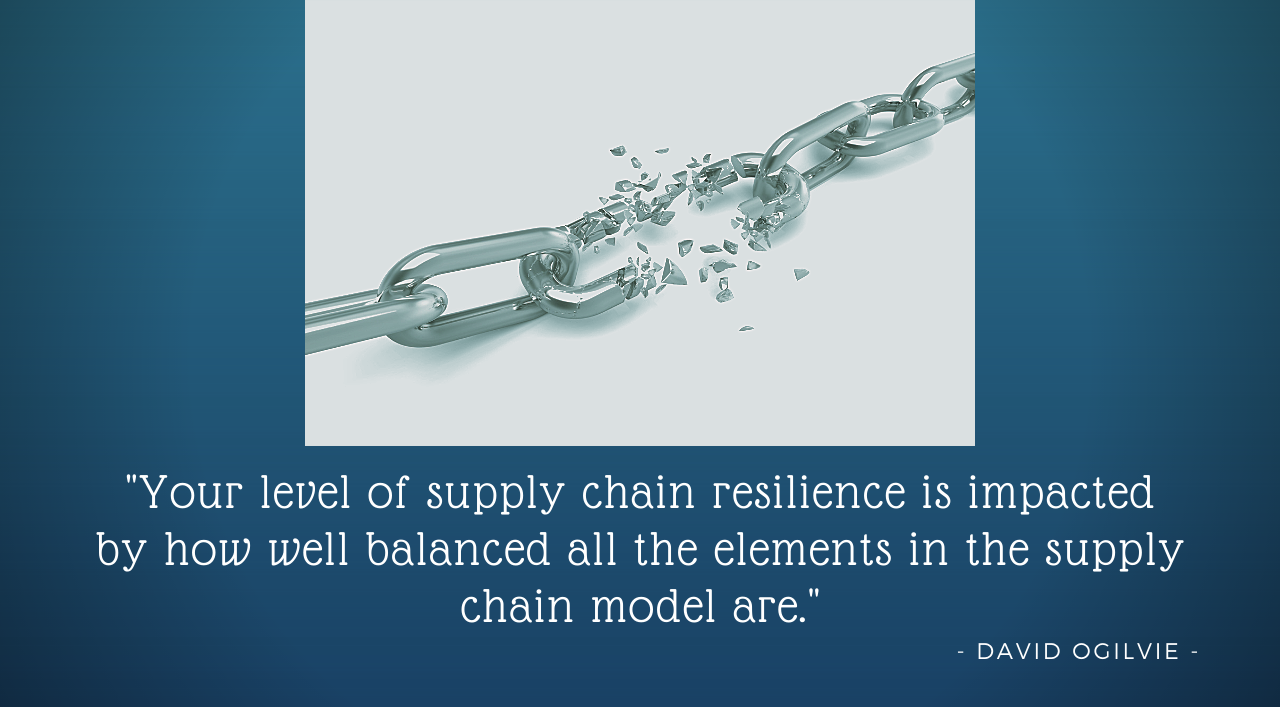
Supply Chain Resiliency
Resilience is defined as, “The capacity to recover from difficulties; toughness.” Or “The ability of a substance or object to spring back into shape; elasticity.” It seems that supply chain resilience is the buzz word of the month in many quarters. The big consulting firms, Gartner etc are all using it in their marketing and are creating offerings around this concept. As regular readers will know this has been a theme of mine for a long time now, not a current fad or trend.
The reality is, in my opinion, supply chain resiliency is in the business 101 bucket. This is something that should always have been in an executive’s view or vision and should remain there always. There is no doubt COVID-19 has definitely changed the playing field. I firmly believe you don’t need a one approach fits all to managing your supply chain. Just as you use different procurement and inventory management strategies to manage your various products and product groups, using different approaches to ensuring those supply chains are as resilient as they can be is required. After all we don’t have one supply chain – right?
Underpinning all those different approaches is the quality of the relationship between you and your suppliers and a key determinant of that, is a deep understanding of the cultural differences. I would not expect you to deal with suppliers in China, Japan or Germany in exactly the same way. The key ingredients to successful Supply Chain relationships are understanding the following:
- The overarching cultural norms in each country you interact with. Your approach should be to enhance each of the 5 Vs in my supply chain model. (Something I will be expanding on more at my next CEO/Business Owner lunch on July 30.)
- The company culture of each specific organisations you transact with. Are they bureaucratic or agile, are they innovative or laggards, do you honestly understand their key drivers, are they cost or quality driven? Are they a hierarchy or matrix driven company? What level of technical sophistication do they operate on? What type of incentives do they receive? All these topics have an influence on how effectively your interactions with them will operate.
- Are they honest? Can you rely on the information you receive from them?
- Any change in supply chain activities or relationship have to be led not managed.
- Relationships being connected to key corporate metrics = like EVA, which I have written about previously.
These relationships are no doubt being put to the test with everyone facing the following challenges at the moment:
- Shipping container availability.
- The costs of both sea and air freight dramatically increasing and cannot be avoided.
- Suez Canal blockage and the downstream impacts on shipping capacity.
- Microprocessor chip shortages resulting in many organisations, including car companies, having difficulty meeting demand. In fact a month or so ago Honda in the US closed their factories for a week due to inventory shortages.
- Technology companies having difficulty getting suitably qualified and experienced consultants.
Your level of supply chain resilience is impacted by how well balanced all the elements in the supply chain model are and how they are coping with these issues.
Add to this the fact many executives realised during COVID-19 they don’t have the quality of information they needed to help and support decision making in uncertain times and so have turned to replacing their ERP systems. This has resulted in a tsunami of work for software vendors.
If you’re an executive or owner of a mid-sized or large company and want to discuss ideas on how you can use systems and technology to dramatically improve efficiency, decrease costs, and increase profits and enhance scalability, give me a call.
Sincerely,
David